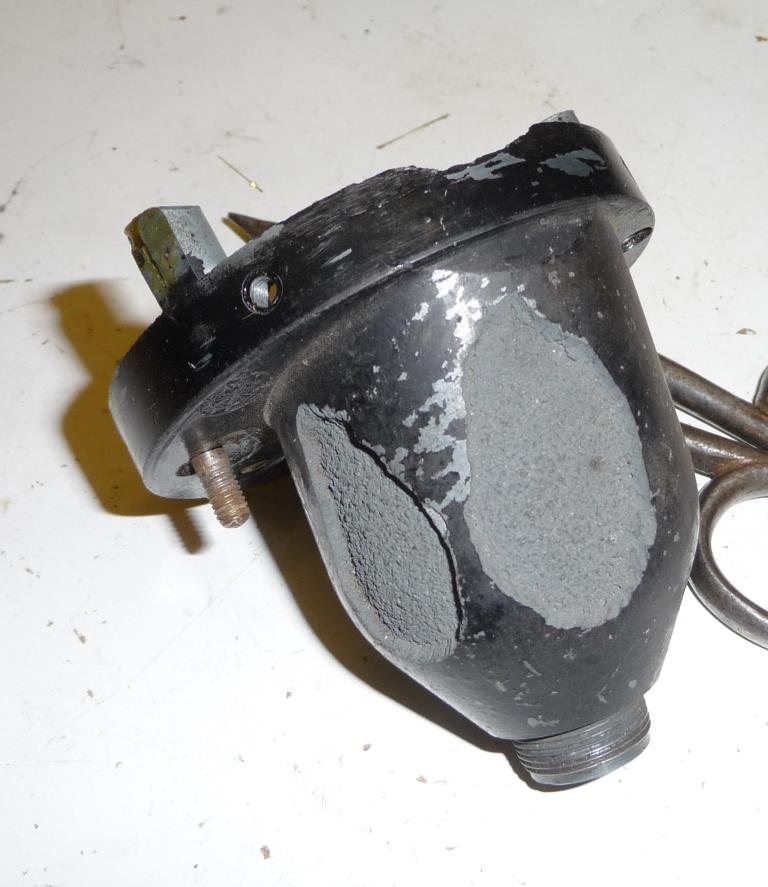The Smiths Mechanical Governor type of Speedometer
The Smiths ‘Governor’ or mechanical type sometimes incorrectly called the MA Speedometer. On the dial of the Mechanical Governor speedometer is painted Smiths MA the MA actually refers to Motor Accessories, one of the divisions of the large Smiths Industries company.
As the name implies this type of speedometer is of a mechanical type as opposed to a magnetic type. The NEMAG speedometers (described in the other part of this website) rely on a magnetic drive to indicate the road speed. In the Smiths Mechanical Governor, the drive to the pointer or needle is mechanical, and to some extent positive. There is a direct mechanical connection between the road wheels and the needle or pointer.
The Governor speedometers were fitted to some British and Foreign made cars but also light commercial vehicles from about 1920 to the very late 1940s. The trend at the very early time was for some speedometers to be fitted as ‘aftermarket’ accessories and so owners would have fitted the speedo of their choice, either a Smiths or perhaps one of the other companies making speedometers at the time; Stewarts, Cooper Stewart or Stewart Warners there were other companies also supplying these instruments. This section of the website will concentrate on the Smiths Mechanical Governor type of speedometer.
One slight challenge for repairers of the Smiths instruments is that while the mechanical governor speedometers are physically similar, there are marked differences of spring strengths and internal wheel counts that make the interchangability of parts a real problem for the unwary.
Much of the data to enable repairers to differentiate between the types of speedometer has been not really available. However, all the data that I have found or been given will eventually be published on this web site.
The various mechanical Governor speedometers are identified by the letter that appears usually ( but not always) in the top half of the dial on the dial. For example the letter N gives a turns per mile TPM of 3360, the letter D gives a differing TPM of 1610. Thus while the speedos look the same they are internally radically different, you have been warned.
The Smiths Chart 1 indicates that there are 37 differing types of the Smiths MA. However the Smiths Table 1 lists 73 differing types of speedometers calibrated for Miles. Records show that Smiths also produced at least 32 speedometers calibrated for Kilometers . However, I understand that the charts might not be complete, and some special applications in particular PA series are missing. In addition most speedometers supplied had an option of being trip or non trip.

Further the Smiths mechanical governor speedometer could be produced in either 3 inch / 80mm diameter or 5 inch / 127 mm diameter options.
There are a also few different styles of flexible drive systems which connect the road wheels via a gear box or final drive to the speedometer head. Some, perhaps the majority, of the later speedos terminate in a female square of ++ diameter others perhaps more commonly found in earlier speedos use a clevis and pin arrangement.
The dial on the various types of speedos also differ, some speedos are calibrated for a maximum speed of 60 mph other are calibrated to up to 100 mph.
The odometers are also of a different style than perhaps the familiar the NEMAG types that have a vertical rolling number system viewed through a slot in the dial. In the Mechanical Governor style the odometers are
on five horizontal discs that are printed with the odometer numbers. Usually the extreme right hands side dial is white on a red background to indicate tenths of a mile. The other numbers are white on a black background. The odometer is read through small ((((((diameter))))) holes punched in the lower half of the dial face.
Some types of mechanical governor speedometers are fitted with a trip mechanism an extra three horizontal dials painted white on black are fitted in the top half of the speedo dial. The clearing of the trip is usually done with a lever on the outside of the casing which is drilled through the back of the casing. There was also an option to have a front cleared trip.
The casing materials for these speedos also vary, in the earlier ones the casing is a mazac, with the glass and its nest made from pressed steel. In the later types the casing are steel. The glass nest is pressed steel. The earlier mazac casings are prone to a sort of de-laminating, correctly termed ‘Exfoliation corrosion’ this is a type of inter-crystalline corrosion that affects aluminium particularly extruded parts. Zinc Pest is a destructive, inter-crystalline corrosion process that affects zinc alloys made before the late 50’s mainly caused impurities and humidity. Mazak was the British equivalent of the American Zamak casting zinc alloy.

The corrosion results in large flakes of the material becoming detached. The mazac is also after this time pretty brittle and much care should be taken to preserve as much as possible during disassembly.
The mechanical governor speedometer is far more complicated internally than is the NEMAG, this is possibly the reason that Smiths eventually opted for the much simpler NEMAG with far fewer moving parts. Considerable care should be taken during disassembly. For example there are 31 1/16 diameter steel ball bearings just waiting to be released into the wild. It is very hard some might say impossible, to locate a single tiny missing ball bearing. There is no need to ask how the author knows this.
However if care is taken, and a basic mechanical competence is exhibited, there is no reason why at least a visual inspection of the internals cannot be undertaken.